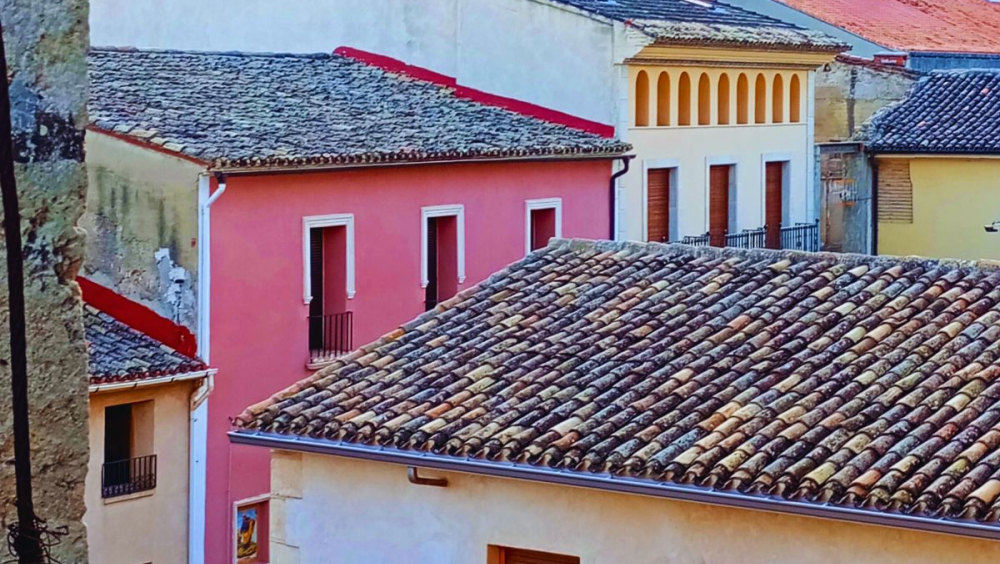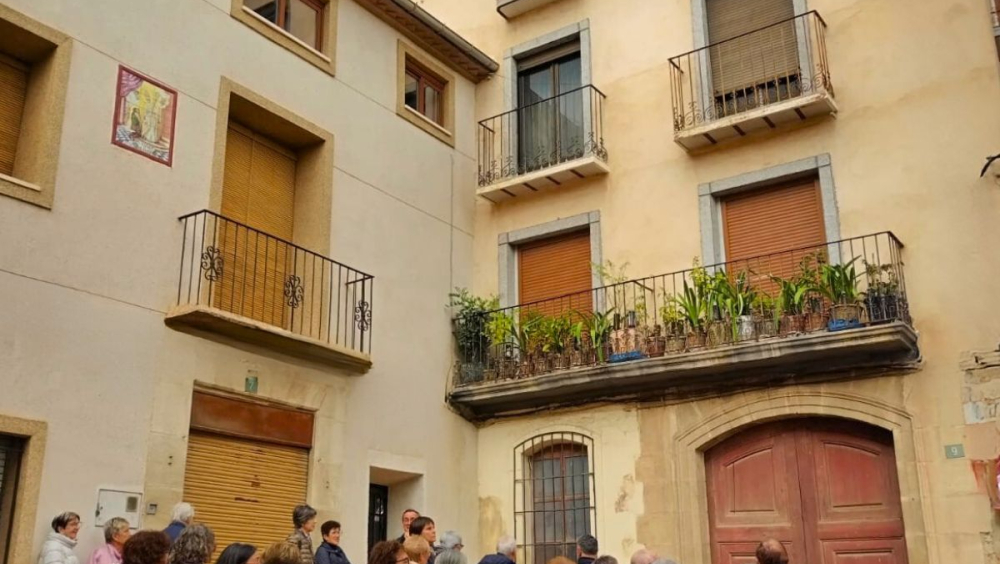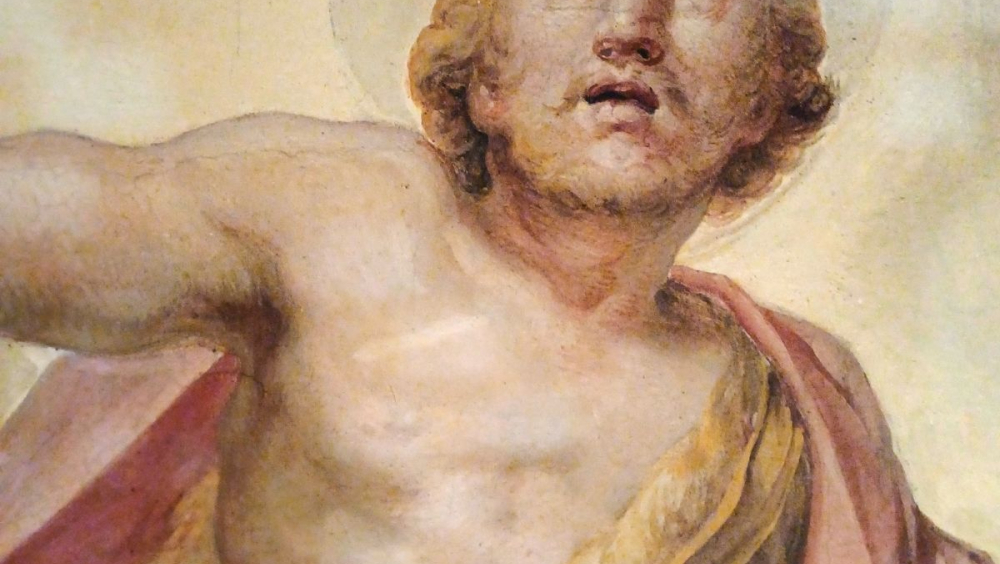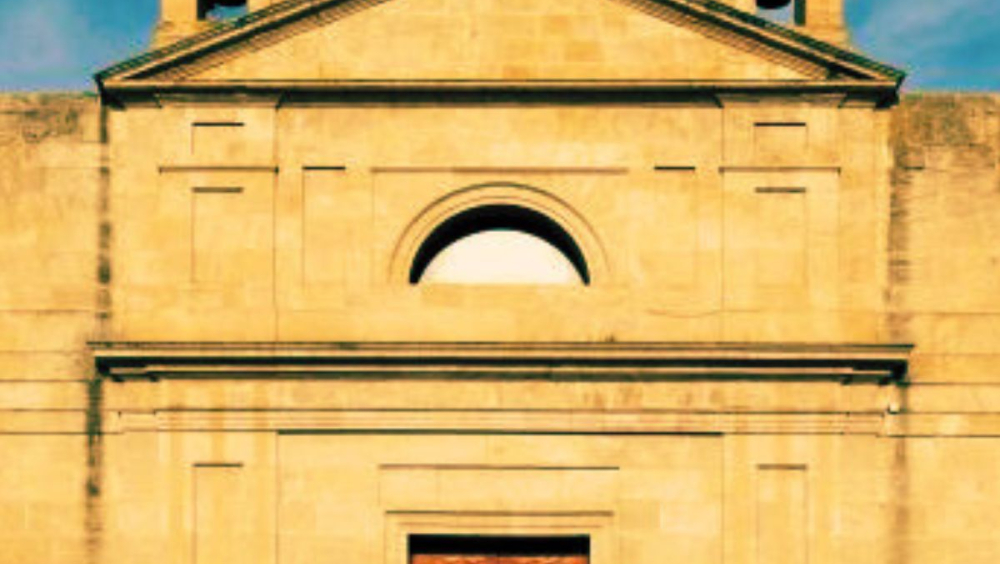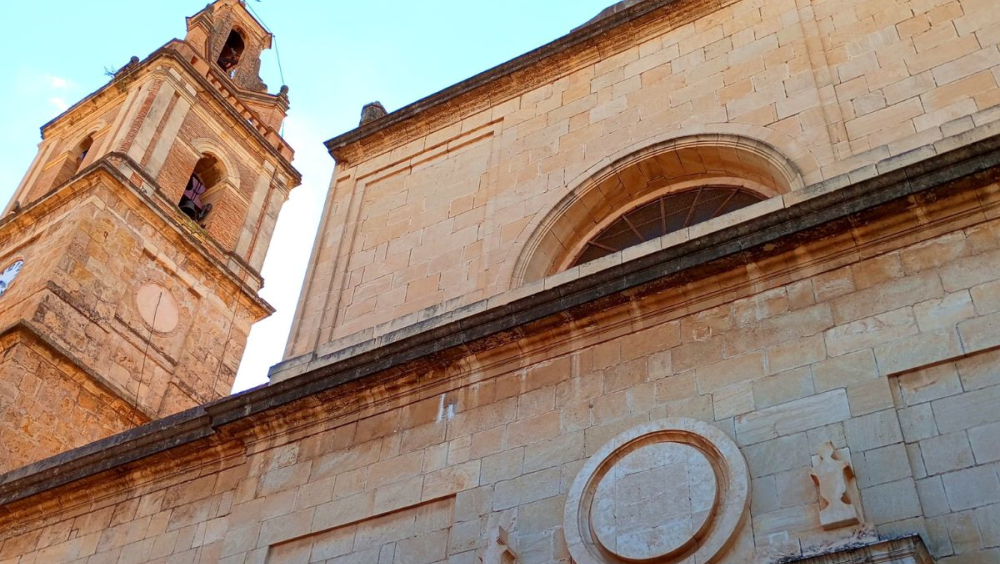Academicist and Neoclassical Muro
The 19th century in Spain, often sidelined in cultural heritage promotion policies due to its complexity and conflicts, has become one of the key pillars in explaining Muro’s urban, social, and cultural reality. In an era where artistic styles blended and merged, Muro embraced academic ideals to forge a unique identity through Neoclassicism.
Today, the cultural heritage that once reshaped the town’s layout presents a real opportunity for transformation, growth, and the creation of new possibilities. Its urban fabric stands as a living testament to this process. The central streets of the town, shaped by their aesthetic transformation, exhibit a coherence that goes beyond mere urban planning. This reorganization aimed not only at visual harmony but also at functionality, creating main axes such as Carrer de l’Àngel, which connected the most emblematic points of the town.
In facing today’s challenges—where rural municipalities must position themselves against the growth of large cities and the post-COVID era— Muro has embarked on a strategy to establish itself as a new cultural and cultural tourism hub. The town aims to become a beacon of light, shining through the purity of a style—Neoclassicism—that has often played the most anonymous role in the history of art.
The 19th century in Spain, often sidelined in cultural heritage promotion policies due to its complexity and conflicts, has become one of the key pillars in explaining Muro’s urban, social, and cultural reality. In an era where artistic styles blended and merged, Muro embraced academic ideals to forge a unique identity through Neoclassicism. Today, the cultural heritage that once reshaped the town’s layout presents a real opportunity for transformation, growth, and the creation of new possibilities.
Its urban fabric stands as a living testament to this process. The central streets of the town, shaped by their aesthetic transformation, exhibit a coherence that goes beyond mere urban planning. This reorganization aimed not only at visual harmony but also at functionality, creating main axes such as Carrer de l’Àngel, which connected the most emblematic points of the town.
The redevelopment of Plaça Palàcio, marked by the construction of the Alonso family’s palace-house, and the renewal of communal spaces like the Canyaret, Hospital, and Sant Roc washing places, laid the foundations of an urban model that combined monumentality with functionality. These spaces became nerve centers of community life, reinforcing collective pride and reflecting the Enlightenment ideals that permeated the era.
However, the most significant urban transformation was driven by the construction of the town’s new religious landmark: the Church of Saint John the Baptist. Designed by the renowned Franciscan architect Vicente Cuenca between 1827 and 1837, the church was adorned with fresco mural paintings by the Valencian artist Miguel Parra before its doors even opened, one of the most important mural painting collections of the 19th century in the Region of Valencia. Parra would later become the director of the Royal Academy of Fine Arts of San Carlos in Valencia and a royal painter for the courts of Ferdinand VII and Isabella II.
The value of cultural heritage lies not only in its ability to connect us to the past but also in its power to shape the present. In Muro, this idea has been the central axis of a strategy that seeks to harmonize historical preservation with contemporary urban development needs. The "Muro Academicist and Neoclassical" project exemplifies how heritage can be used to revitalize urban spaces, repurpose them, and integrate them into community life. As part of this effort, a Recovery Plan for the Built Environment in Muro’s Historic Center has already been activated. Additionally, through the Cultural District strategy, the community is being invited to design new green corridors—urban pathways that not only narrate the town’s cultural heritage but also serve as climate-resilient and natural refuges.
Ultimately, the "Academicist and Neoclassical Muro" project seeks to drive a comprehensive renewal based on sustainability and social cohesion. This approach will not only reinforce local identity but also attract investment and visitors, connecting Muro with regional and international dynamics.
In facing today’s challenges—where rural municipalities must position themselves against the growth of large cities and the post-COVID era—Muro has embarked on a strategy to establish itself as a new cultural and tourism hub. The town aims to become a beacon of light, shining through the purity of a style—Neoclassicism—that has often played the most anonymous role in the history of art.
Beyond its material heritage, Academicism and Neoclassicism have provided Muro with a new framework for action. The richness of this historical narrative allows the town to position itself alongside other powerful cultural narratives in the region. In this context, Muro has placed Academicism and Neoclassicism at the heart of a cultural initiative that not only honors the past but also projects a contemporary and sustainable vision with a strong European dimension.
The Cultural Heritage Department of the Municipality of Muro has launched an initiative to establish Europe’s first non-urban Cultural District, aiming to showcase and enhance both the tangible and intangible heritage of the town. This district will serve as a platform to develop key principles of the New European Bauhaus: innovation, sustainability, and beauty.
Muro’s emergence as a cultural reference point not only strengthens its uniqueness but also complements other regional initiatives and fosters potential collaborations with European municipalities. In fact, with the first European Heritage Days set to take place in Muro in 2024, the town hall has already established connections with institutions such as Musées de la Ville de Paris, Sorbonne University, Italy’s Istituto dei Beni Culturali, the Camón Aznar Museum in Zaragoza, and the Museum of Fine Arts of Valencia-San Pius V, among others.
